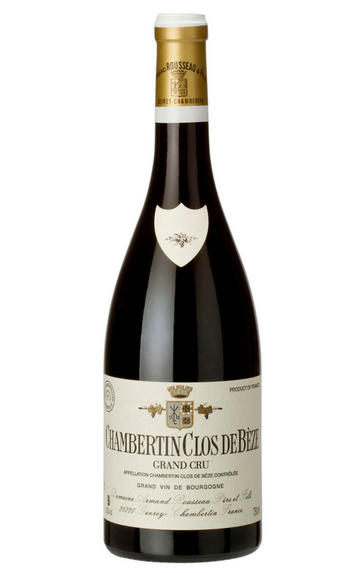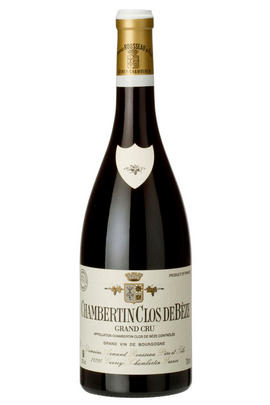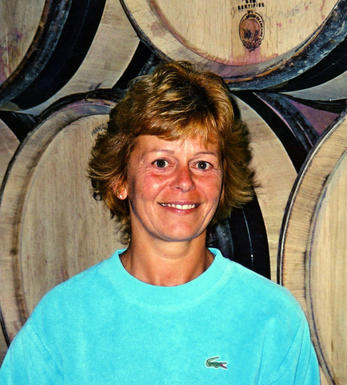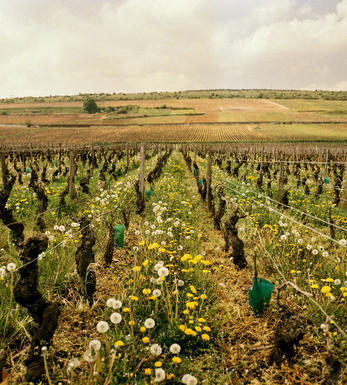
2004 Chambertin, Clos de Bèze, Grand Cru, Domaine Armand Rousseau, Burgundy

Critics reviews
(Jancis Robinson MW- jancis robinson.com Oct 2007)
About this WINE

Domaine Armand Rousseau
Domaine Armand Rousseau is one of the most famous and best domaines in Burgundy. Based in Gevrey-Chambertin, the estate is formed of just over 15 hectares, over half of which is Grand Cru.
This is one of Burgundy’s greatest domaines – in terms of history, vineyard holdings and quality of wine. The original Armand Rousseau was at the forefront of the first wave of domaine bottling in the 1930s. He was succeeded by his son Charles in 1959, shortly after they had bought a significant slice of the Clos St Jacques vineyard. Today Eric, grandson of Armand, is in charge of the vines and cellar, with the help of his daughter Cyrielle.
The domaine produces pale, finely structured wines of great elegance and stamina. The simple principle of old (but not ancient) vines and sensible yields dictates the Rousseau style. Sometimes the wines can appear light in their youth, but they nearly always take on weight as they age.
The farming here is traditional, with green harvesting where necessary to control yields (which range between 30 and 40hl/ha). The vineyards are ploughed and the use of sprays minimal. In the winery, 90% of the fruit is de-stemmed – the 10% whole-bunch adding tannin and structure to the wines. Fermentation is in open-topped stainless steel vats, with regular pumping over and punch-downs, but temperatures kept below 31°C. The fruit is then pressed gently, settles and transferred to barrel where the wines gently mature.
While the wines are by far some of the most collectible, commanding high prices on the secondary market, the family makes great wines with the hope that they will be drunk, not traded – a hope that we share.
We are one of the distributors for Domaine Rousseau in the UK. We have limited stocks available that are not listed online. Please contact us at finewine@bbr.com or on 020 3301 2883 for more information.

Chablis Premier Cru
Chablis Premiers Crus are stylish, minerally wines which, typically, are less intense than the Grand Crus but finer and longer-lasting than basic Chablis. They are highly underrated with the better examples outclassing many a good village white Burgundy.
The vineyards cover 750 hectares, scattered across 15 communes on isolated slopes with good exposure. There are 17 principal Premiers Crus but in total 79 vineyards are eligible, with most of the lesser-known ones using a more familiar umbrella name on their label. The best flank the Grands Crus on the north bank of the River Serein, like Montée de Tonnerre (probably the best of all), Fourchaume and Mont de Milieu.
Those just south of Chablis, like Vaillons, Montmains (especially Les Forêts) and Côte de Léchet are also good. With the vineyard area having doubled since the 1970s, quality varies enormously so, as ever, the producer is key.
Styles also vary, with some maturing and fermenting in stainless steel for a purer, more minerally style, while others age and sometimes even ferment their wines in oak for extra complexity. The best examples reach their apogee at eight to 10 years, but are normally enjoyed long before then.
Recommended producers: Jean-Claude Bessin, Billaud-Simon, Séguinot-Bordet, J.-P. & Benoit Droin, Duplessis, Defaix

Pinot Noir
Pinot Noir is probably the most frustrating, and at times infuriating, wine grape in the world. However when it is successful, it can produce some of the most sublime wines known to man. This thin-skinned grape which grows in small, tight bunches performs well on well-drained, deepish limestone based subsoils as are found on Burgundy's Côte d'Or.
Pinot Noir is more susceptible than other varieties to over cropping - concentration and varietal character disappear rapidly if yields are excessive and yields as little as 25hl/ha are the norm for some climats of the Côte d`Or.
Because of the thinness of the skins, Pinot Noir wines are lighter in colour, body and tannins. However the best wines have grip, complexity and an intensity of fruit seldom found in wine from other grapes. Young Pinot Noir can smell almost sweet, redolent with freshly crushed raspberries, cherries and redcurrants. When mature, the best wines develop a sensuous, silky mouth feel with the fruit flavours deepening and gamey "sous-bois" nuances emerging.
The best examples are still found in Burgundy, although Pinot Noir`s key role in Champagne should not be forgotten. It is grown throughout the world with notable success in the Carneros and Russian River Valley districts of California, and the Martinborough and Central Otago regions of New Zealand.


Buying options
Add to wishlist
Description
Looks if anything less blue than most other vintages. Pretty complete and rich on the nose for a 2004! Most impressive… Very fruity and dense and exciting. Really lively and vigorous. Long. Lively cherry fruit.
(Jancis Robinson MW- jancis robinson.com Oct 2007)
wine at a glance
Delivery and quality guarantee